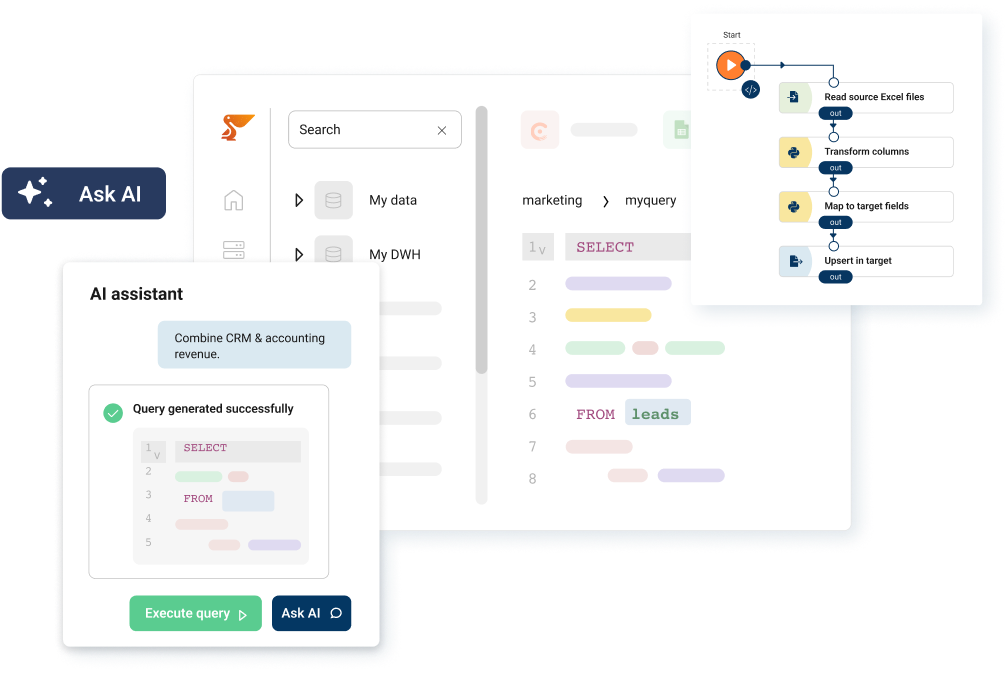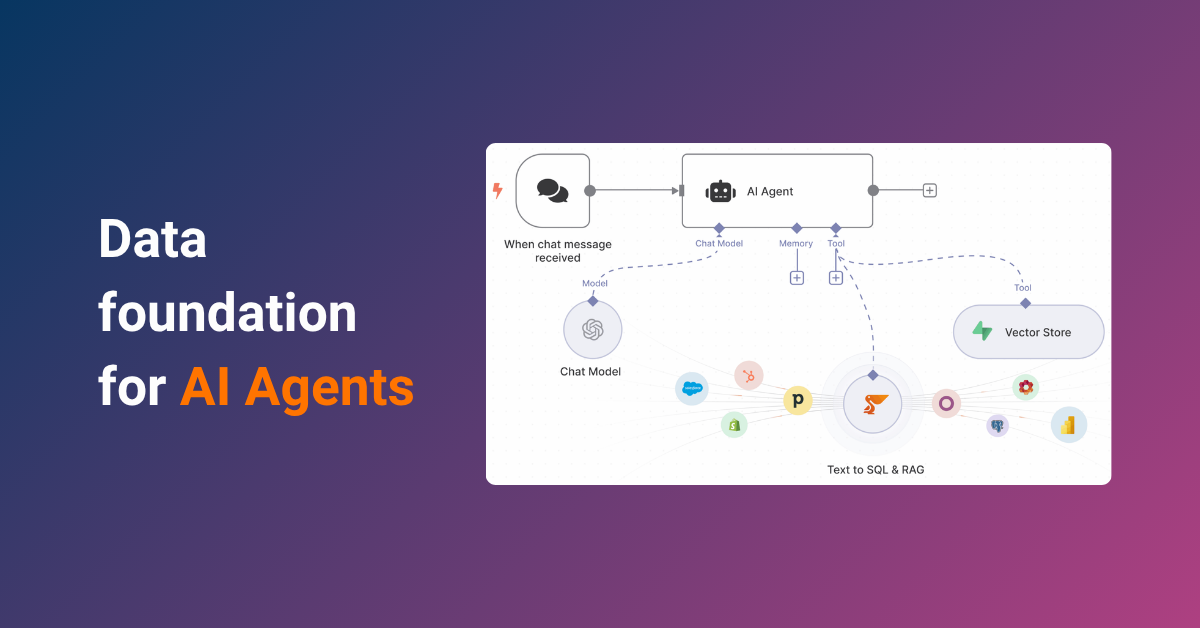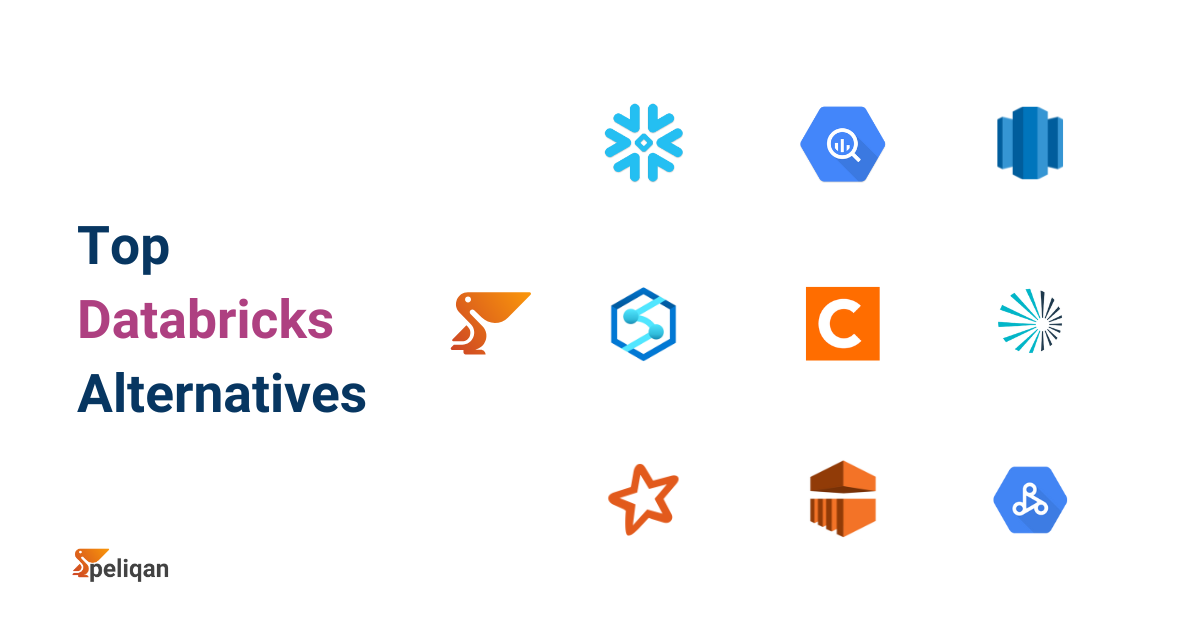Data management solutions encompass a range of processes and technologies designed to improve the quality and accessibility of data throughout its lifecycle. At the core of effective data management lies the principle of integrating robust methodologies with advanced tools that allow businesses to not only store and retrieve information efficiently but also to analyse and derive actionable insights from it.
Businesses today face numerous challenges, including the sheer volume of data generated from various sources and the increasing complexity of data compliance regulations. To address these challenges, companies must invest in comprehensive data management strategies that incorporate data governance, data quality assurance, and data integration techniques, all while ensuring that data security protocols are adhered to.
This multifaceted approach not only streamlines operations but also enhances decision-making capabilities, fostering a culture of data-driven success. As we delve deeper into this listicle, we will explore the fundamental components of data management solutions, equipping organizations with the knowledge necessary to enhance their data handling practices and ultimately achieve greater operational efficiency.
Understanding Data Management Tools
Data management solutions encompass a set of practices and technologies that help businesses collect, store, manage, and analyze data efficiently. These solutions support organizations in making informed decisions, maintaining data integrity, and complying with regulatory guidelines. With the right data management strategy, businesses can harness the power of their data to drive growth and innovation.
The effectiveness of a data management strategy is largely determined by the specific types of solutions implemented, each tailored to address distinct data challenges and requirements within an organization. Understanding these various types is crucial for businesses aiming to maximize their data utility and safeguard their information assets.
Types of Data Management Solutions
Data management solutions can be classified into several categories, each serving distinct functions within an organization’s data ecosystem.
- Database Management Systems (DBMS): Central to any data management strategy, DBMS platforms like Oracle, MySQL, and Microsoft SQL Server facilitate the creation, retrieval, and management of data in structured formats. They ensure data integrity, enforce data security policies, and support multiple user access through Transaction Management Systems (TMS).
- Data Integration Tools: These tools, such as Apache NiFi and Talend, enable the seamless combination of data from various sources, ensuring a unified view across platforms. Data integration is vital for organizations aiming to leverage data across disparate systems, thus improving analysis and reporting.
- Data Warehousing Solutions: Data warehousing technologies, including Amazon Redshift and Snowflake, aggregate vast amounts of data from different sources into a central repository. This enables organizations to perform complex queries and analytics efficiently, often enhancing business intelligence efforts by providing historical insights for strategic decision-making.
- Data Governance Frameworks: A critical component of data management, governance frameworks like Collibra and Informatica help establish policies for data quality, privacy, and security. These frameworks ensure that data within the organization is handled ethically and in compliance with legal guidelines, thereby safeguarding the organization’s reputation and risk management.
- Master Data Management (MDM): MDM solutions focus on ensuring the consistency and accuracy of critical business data across the organization. These systems consolidate data from various sources, addressing issues of duplicates and inconsistencies, and providing a single source of truth which is essential for operational efficiency.
- Data Analytics Platforms: Tools such as Tableau and Microsoft Power BI are integral for transforming raw data into actionable insights. These platforms support advanced analytics, enabling businesses to visualize trends and make informed decisions based on data-driven evidence.
Each type of data management solution plays a vital role in enhancing the operational efficiency and overall agility of an organization. By understanding and implementing the appropriate systems, businesses can optimize their data flows and leverage their data assets strategically to gain a competitive advantage in the marketplace.
Factors to Consider When Choosing a Data Management Solution
Selecting the right data management solution is a critical decision that can profoundly impact an organization’s ability to manage and utilize its data effectively. The following factors should be comprehensively evaluated before making a choice:
Business Requirements Alignment
It is paramount to understand the specific data management needs of the organization. This involves identifying the type of data that will be managed, the volume of data, and the frequency of data access. Solutions should align with these needs to ensure that they can adequately handle current and future data demands. Engaging stakeholders from various departments can help in gathering insights that shape these requirements.
Integration Capabilities
Given the multitude of disparate systems that organizations use across their operations, it is essential that any chosen data management solution seamlessly integrates with existing systems such as ERP, customizable CRM, and other databases. A solution with robust API support and compatibility with various data formats will facilitate smoother data transfers, consistency, and unified access.
User Experience and Accessibility
A user-friendly interface is vital for ensuring high adoption rates among employees. Solutions that empower users with intuitive functionalities, self-service options, and easy navigation will promote engagement and efficiency. Additionally, accessibility across various devices, including mobile, is essential, especially in an increasingly remote and mobile-oriented work environment.
Data Security and Compliance
Security features must be a top priority when evaluating data management solutions, given the critical threats to data integrity and confidentiality. Organizations should assess whether potential solutions include robust security protocols such as encryption, access controls, and comprehensive audit trails. Furthermore, the solution should facilitate compliance with relevant regulations such as GDPR or NIS2 by enabling data governance and privacy functionalities.
Cost
While budget considerations are crucial, the total cost of ownership must be examined rather than just initial licensing costs. This includes evaluating costs related to implementation, training, maintenance, and potential future upgrades. Organizations must ensure that the anticipated return on investment justifies the expenditure, taking into account the long-term benefits that a robust data management solution will provide.
Vendor Support and Community
The reputation and support services offered by the solution’s vendor also play a significant role in the decision-making process. Organizations should look for vendors that provide comprehensive training, customer support, and active user communities. Evaluating vendor responsiveness and available resources can predict the overall success of the implementation and ongoing utilization.
By thoroughly considering these factors, organizations can enhance their decision-making process and strategically select a data management solution that meets their current needs while accommodating future growth and evolution in the data landscape. This due diligence will ultimately empower businesses to unlock the full potential of their data assets and improve operational efficiencies.
Top 15 Data Management Tools
Choosing the right data management tools is essential for optimizing your organization’s data processes. Below, we provide a detailed examination of selected tools, each accompanied by a description, key features, best suited applications, and potential limitations.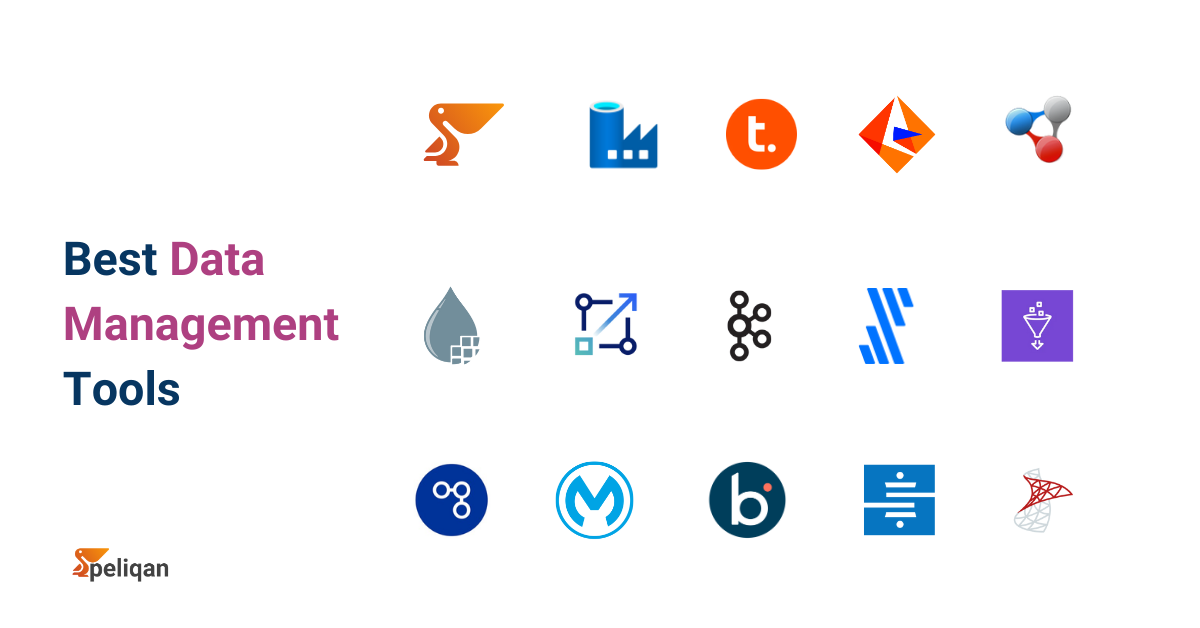 Let take a comprehensive overview of the top data management tools, each evaluated on their unique features, capabilities, and overall value to businesses pursuing a streamlined integration strategy.
Let take a comprehensive overview of the top data management tools, each evaluated on their unique features, capabilities, and overall value to businesses pursuing a streamlined integration strategy.
1. Peliqan

Peliqan is an advanced data management tool designed for agencies and teams that require seamless data collection, management, and reporting. It integrates effortlessly with various data sources, providing a comprehensive platform for managing complex datasets.
Key Features:
- Data Integration: Peliqan supports seamless integration with multiple data sources, including cloud storage, databases, and third-party applications. This capability allows organizations to consolidate datasets efficiently, enabling a single source of truth.
- Data Activation: Peliqan empowers organizations to efficiently activate their data, transforming raw information into actionable insights. This capability enables businesses to strategically leverage data for targeted marketing campaigns, operational enhancements, and informed decision-making, ensuring alignment with organizational objectives.
- ETL (Extract, Transform, Load): Peliqan’s comprehensive ETL processes facilitate the extraction of data from diverse sources, transforming it into a usable format and seamlessly loading it into destination repositories. This streamlining of data preparation workflows enhances the speed and accuracy of data intake while ensuring consistency across all systems.
- Built-in Data Warehouse: Peliqan provides a robust built-in data warehouse solution, acting as a centralized repository for both structured and unstructured data. This feature optimizes storage and retrieval capabilities, enabling organizations to execute complex queries and analyses without sacrificing performance or accessibility.
- Reverse ETL: The reverse ETL functionality enables organizations to synchronize processed data back into operational systems, including CRM and marketing platforms. This capability ensures that insights derived from analytical processes can be effectively implemented, thereby closing the feedback loop and enhancing overall operational efficiency.
Best Suited Applications: Peliqan is particularly well-suited for industries that require rigorous data management and compliance, such as finance, healthcare, and retail. Its capabilities make it an ideal choice for organizations aiming to enhance their data governance practices while driving innovation through data-driven insights.
Potential Limitations: Users might face a learning curve when leveraging its advanced features, which necessitates adequate training and support during the onboarding process.
2. Microsoft Azure Data Factory

Azure Data Factory is a cloud-based data integration service that allows users to create data-driven workflows for orchestrating and automating data movement and data transformation. It facilitates hybrid data integration and helps organizations manage data from cloud and on-premises sources effectively.
Key Features:
- Data Movement: Azure Data Factory provides seamless connectivity to a wide array of data sources, making it easy to ingest data for processing.
- Data Transformation: Users can leverage built-in transformations, or custom code, allowing for flexibility in data preparation.
- Visual Interface: A user-friendly graphical interface makes it simple to design and manage data workflows without extensive coding knowledge.
- Monitoring and Management: Real-time monitoring features help to track pipeline performance and manage workflows efficiently.
Best Suited For: Organizations looking for robust cloud data integration solutions that need to combine on-premises and cloud data sources.
Limitations: Azure Data Factory can incur high costs due to pay-as-you-go pricing if not monitored carefully. Additionally, some users may find the initial setup complex.
3. Talend Data Integration

Talend Data Integration is an open-source data integration tool designed to simplify the process of efficiently extracting, transforming, and loading data across systems. It supports multi-cloud, hybrid, and on-premises environments.
Key Features:
- Wide Range of Connectors: Offers numerous connectors for databases, cloud services, and applications for easier data ingestion.
- Data Quality Features: Built-in capabilities to ensure data quality through profiling, validation, and cleansing.
- Real-time Processing: Allows users to perform real-time data processing, which is essential for time-sensitive applications.
- Collaborative Development: Supports a collaborative development environment where teams can work together on data integration jobs.
Best Suited For: Companies that require a comprehensive and scalable data integration solution, particularly those dealing with complex data landscapes.
Limitations: While the open-source version is cost-effective, the enterprise version can be pricey. The learning curve can be steep for users unfamiliar with data integration concepts.
4. Informatica PowerCenter
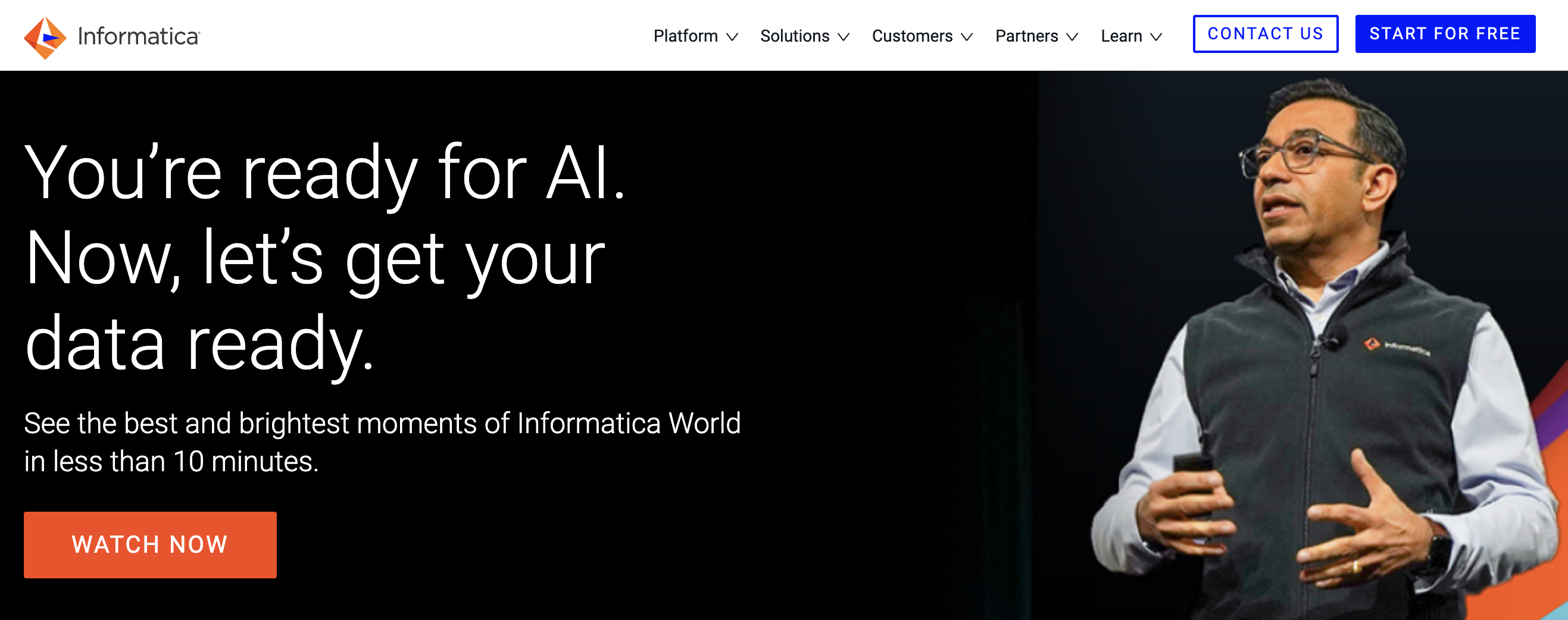
Informatica PowerCenter is a widely recognized data integration tool used to create, manage, and automate data workflows across diverse environments. It provides extensive capabilities for data extraction, transformation, and loading (ETL) processes.
Key Features:
- Robust ETL Capabilities: Offers a comprehensive platform for data integration, allowing for advanced ETL processes that cater to complex data scenarios.
- Metadata Management: Provides tools for metadata management, which help organizations maintain transparency and compliance across their data assets.
- Scalability: Supports large-scale data operations with a high degree of scalability, accommodating growing data volumes effortlessly.
- Data Quality Integration: Incorporates data quality functions within workflows, ensuring that data integrity is maintained throughout the integration process.
Best Suited For: Enterprises with sophisticated data integration needs that require high reliability and strong governance capabilities.
Limitations: The licensing costs can be significant, making it less accessible for smaller organizations, and the learning curve may be steep for new users.
5. Oracle Data Integrator
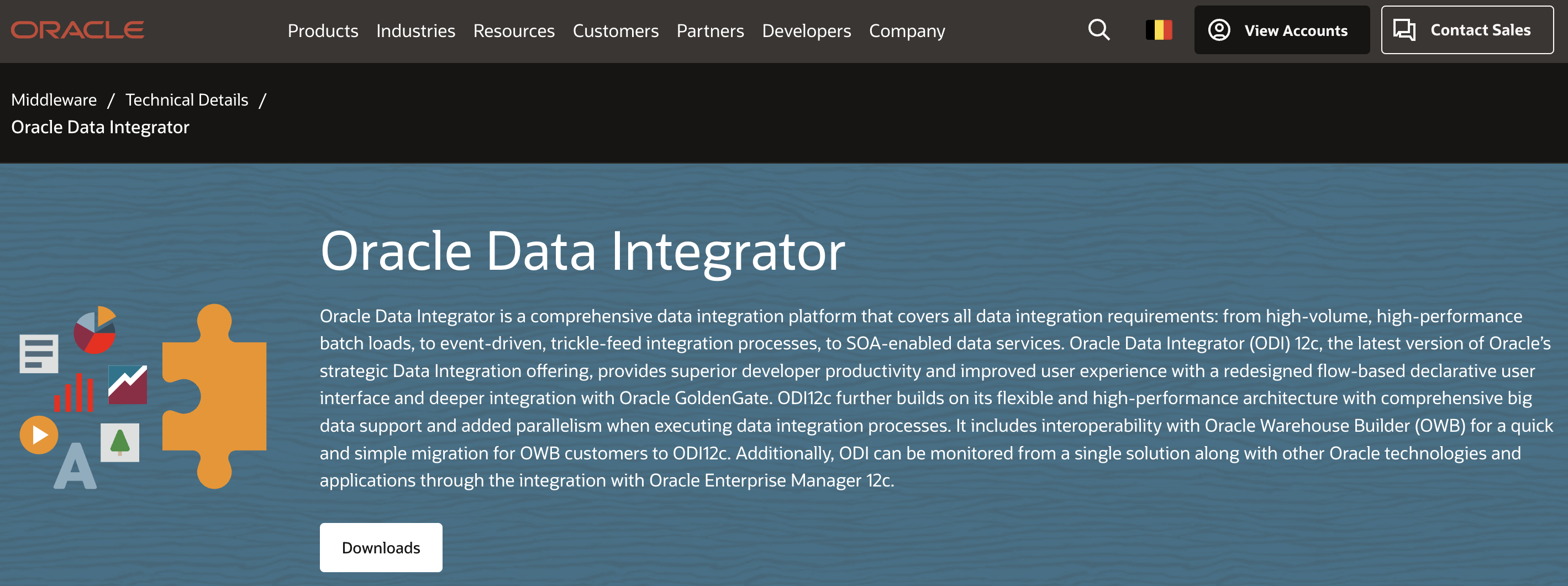
Oracle Data Integrator (ODI) is a comprehensive data integration platform that supports big data and enables efficient data integration across heterogeneous data sources. It harnesses data integration best practices for handling complex data environments.
Features:
- ELT Architecture: Utilizes an Extract, Load, Transform (ELT) architecture that leverages the power of the target database for transformations, enhancing performance.
- Integrated Data Quality: Integrated data profiling and cleansing ensure that data remains accurate and usable.
- Real-time Integration: Facilitates real-time data integration capabilities for immediate insights.
- Advanced Analytics Support: Offers support for data integration with machine learning and big data technologies.
Best Suited For: Organizations heavily invested in Oracle environments or looking for high-performance data integration solutions.
Limitations: Oracle Data Integrator is best suited for users familiar with Oracle technologies, potentially limiting its appeal to organizations using diverse systems. Its licensing costs can also be a barrier for smaller enterprises.
6. Apache Nifi

Apache Nifi is a robust, open-source data integration platform designed for the automation of data flow between systems. It is particularly well-suited for environments that require real-time data processing and continuous data ingestion from diverse sources.
Features:
- Data Flow Management: Nifi provides a web-based interface that allows users to design, monitor, and manage data flows with visual programming, promoting ease of use.
- High Scalability: With its distributed architecture, Nifi can scale horizontally to handle large volumes of data efficiently.
- Data Provenance: Nifi includes comprehensive data provenance capabilities, providing detailed tracking of data movement and transformations throughout the data flow.
- Configurability: Offers a rich set of processors that can be configured for specific tasks, allowing for extensive customization tailored to organizational needs.
Best Suited For: Organizations that require a flexible, user-friendly interface for managing data flows in real time, especially in environments that involve streaming data.
Limitations: Although Apache Nifi is powerful, it may require significant resources for optimal performance. Additionally, the steep learning curve associated with its advanced features can pose a challenge for new users.
7. IBM DataStage

IBM DataStage is an enterprise-grade data integration tool that forms part of the IBM InfoSphere suite. It provides scalable data integration capabilities for data warehousing and business intelligence applications.
Features:
- Comprehensive ETL Functionality: Supports complex Extract, Transform, Load (ETL) processes, enabling users to handle large volumes of data effectively.
- Rich Connectivity Options: Offers a wide range of connectors for integration with various data sources, including databases, applications, and flat files.
- Data Management Tools: Incorporates data quality and governance tools to ensure that integrated data complies with enterprise standards.
Best Suited For: Large organizations needing a reliable and powerful data integration tool capable of handling complex data processes and high data volumes.
Limitations: IBM DataStage can involve high licensing costs and may require considerable investment in infrastructure. Some users report a steep learning curve, particularly when customising data workflows.
8. Apache Kafka

Apache Kafka is a distributed streaming platform that excels in real-time data integration, processing, and storage. It allows users to publish and subscribe to streams of records and is particularly effective for building data pipelines and applications that require real-time processing.
Features:
- High Throughput: Capable of handling large volumes of data with low latency, making it ideal for enterprise-level applications.
- Scalable Architecture: Kafka can be scaled horizontally by adding more brokers to the cluster, ensuring resilience and fault tolerance.
- Stream Processing: Integrates seamlessly with various stream processing frameworks like Apache Flink and Kafka Streams for advanced analytics.
- Durability: Data written to Kafka is durable and can be replicated across multiple nodes, enhancing data reliability.
Best Suited For: Organizations with a need for real-time data processing and a focus on event-driven architectures.
Limitations: The complexity of setting up and managing a Kafka cluster can be challenging for teams lacking expertise in distributed systems, and careful design is required to avoid potential data redundancy.
9. Fivetran
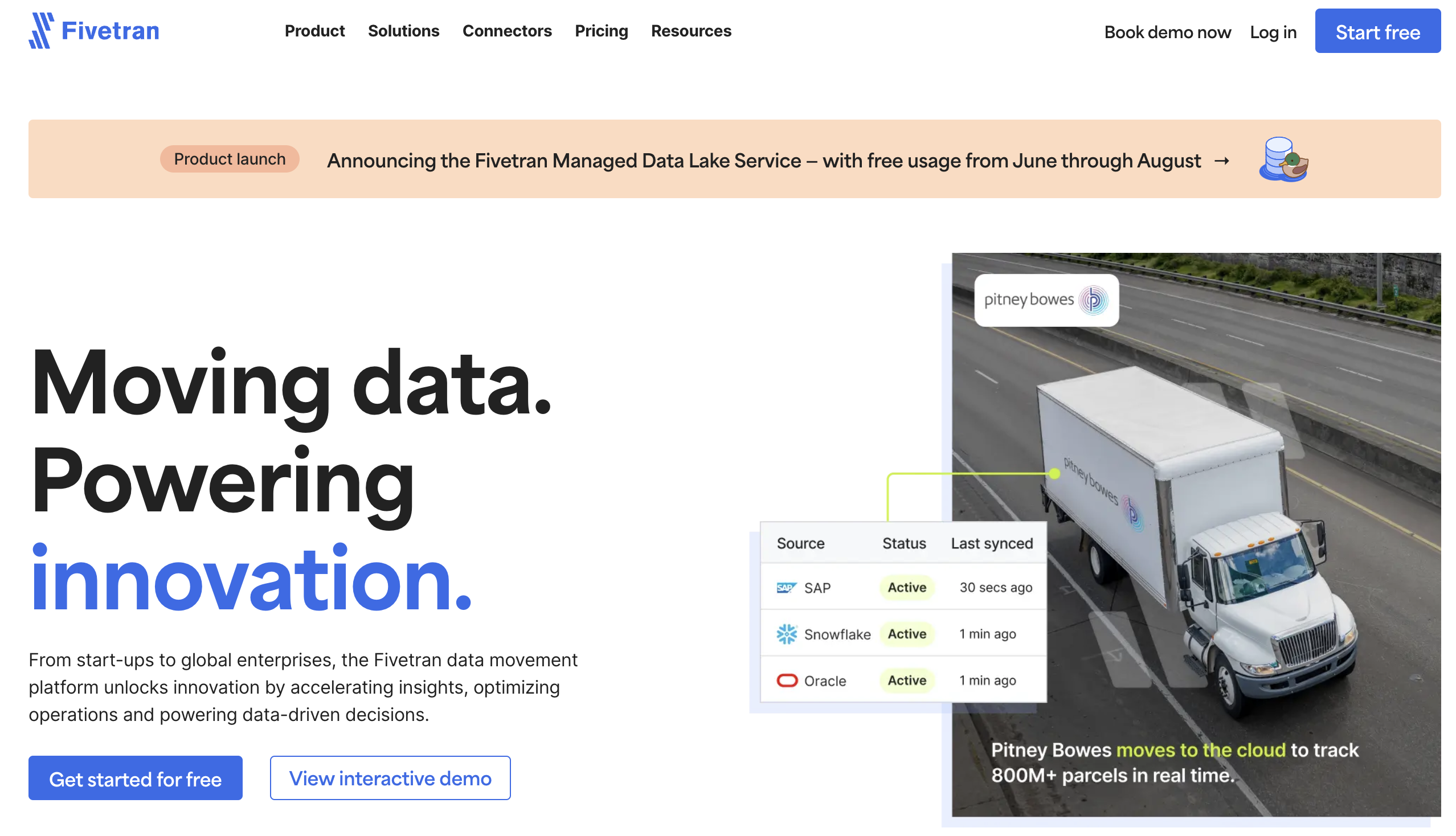
Fivetran is a cloud data integration tool designed for automating data pipelines efficiently. It focuses on providing connectors that enable real-time data synchronization between source systems and cloud data warehouses.
Features:
- Automated Data Integration: Fivetran automatically adjusts to changes in source schema, reducing the need for manual data engineering.
- Pre-Built Connectors: Offers a wide array of pre-built connectors, allowing organizations to connect to many popular data sources with minimal setup.
- Real-Time Data Replication: Supports near real-time data replication to provide up-to-date data for analytics and reporting.
- Data Transformations: Allows users to define transformations within the platform, facilitating a smoother workflow from data ingestion to analysis.
Best Suited For: Companies looking for a straightforward solution to connect disparate data sources to their cloud data warehouses without dedicating extensive engineering resources.
Limitations: Fivetran’s reliance on automated processes may limit customisation, which could be a drawback for organizations requiring intricate data transformations beyond what pre-built connectors offer.
10. AWS Glue

AWS Glue is a fully managed extract, transform, and load (ETL) service designed for preparing and loading data for analytics. It simplifies the process of data discovery, categorization, and transformation across AWS services.
Features:
- Serverless Architecture: Eliminates the need to provision and manage servers for ETL tasks, allowing users to focus on their applications.
- Data Cataloging: Automatically catalogs metadata and keeps it up to date, enabling users to easily discover and access data.
- Scalable and Cost-Effective: Scales automatically with the workload, ensuring that costs are managed according to actual usage.
Best Suited For: Organizations using AWS infrastructure that require a streamlined approach to preparing and loading data for analytics.
Limitations: Limited to AWS services and may not readily integrate with on-premise systems, posing a challenge for hybrid architectures.
11. SnapLogic
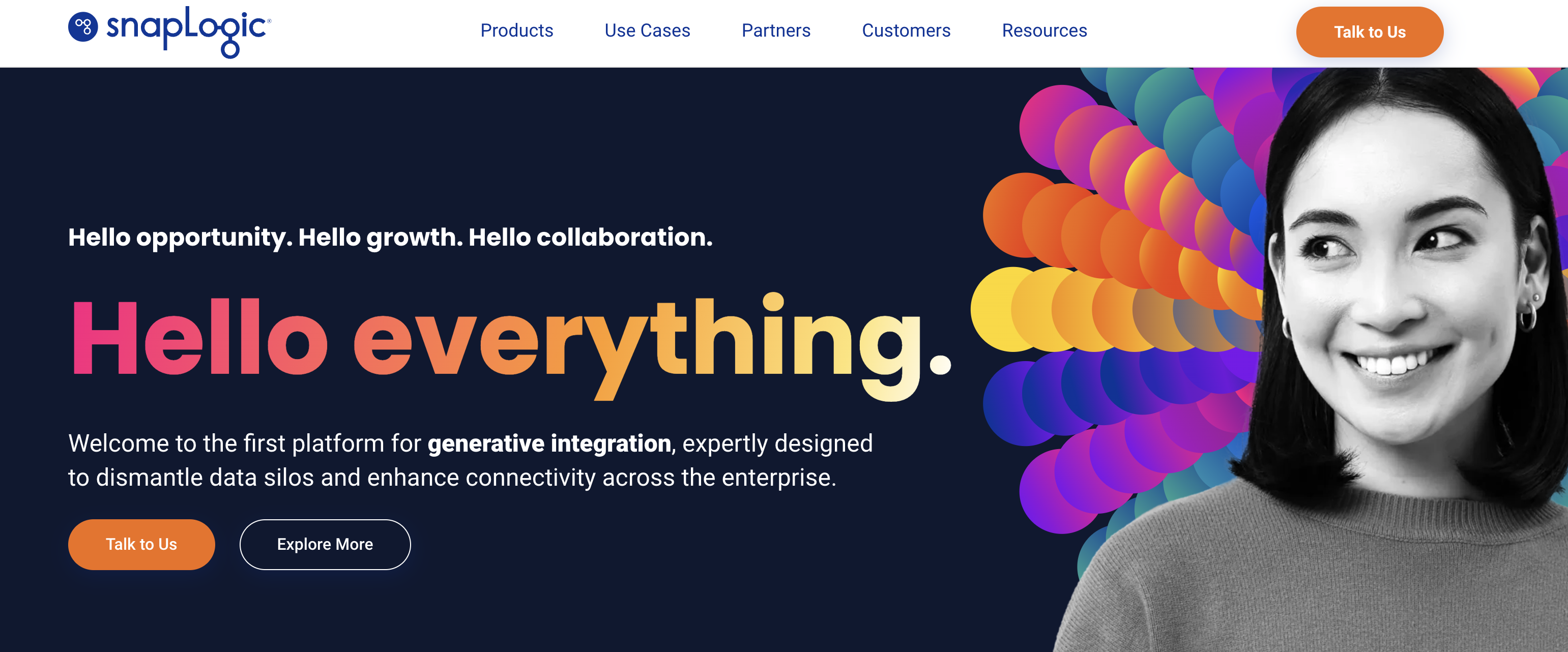
SnapLogic is an integration platform as a service (iPaaS) that focuses on connecting cloud and on-premise applications and data sources. It incorporates an AI-driven approach to enhance productivity and accelerate integration processes.
Features:
- Intelligent Integration: Utilizes machine learning algorithms to automate and optimize integration processes.
- Pre-built Snaps: Offers a library of pre-built connectors, or “Snaps,” that facilitate quick integration with various data sources and applications.
- Visual Interface: Provides a drag-and-drop interface for designing integration workflows, simplifying the experience for users.
- Real-time Processing: Supports both batch and real-time data processing capabilities, making it versatile for various use cases.
Best Suited For: Businesses requiring rapid integration across diverse applications and a preference for cloud-based management.
Limitations: Businesses with a heavy reliance on on-premise systems may find fewer options available, and costs can accumulate quickly with increased usage.
12. MuleSoft Anypoint Platform
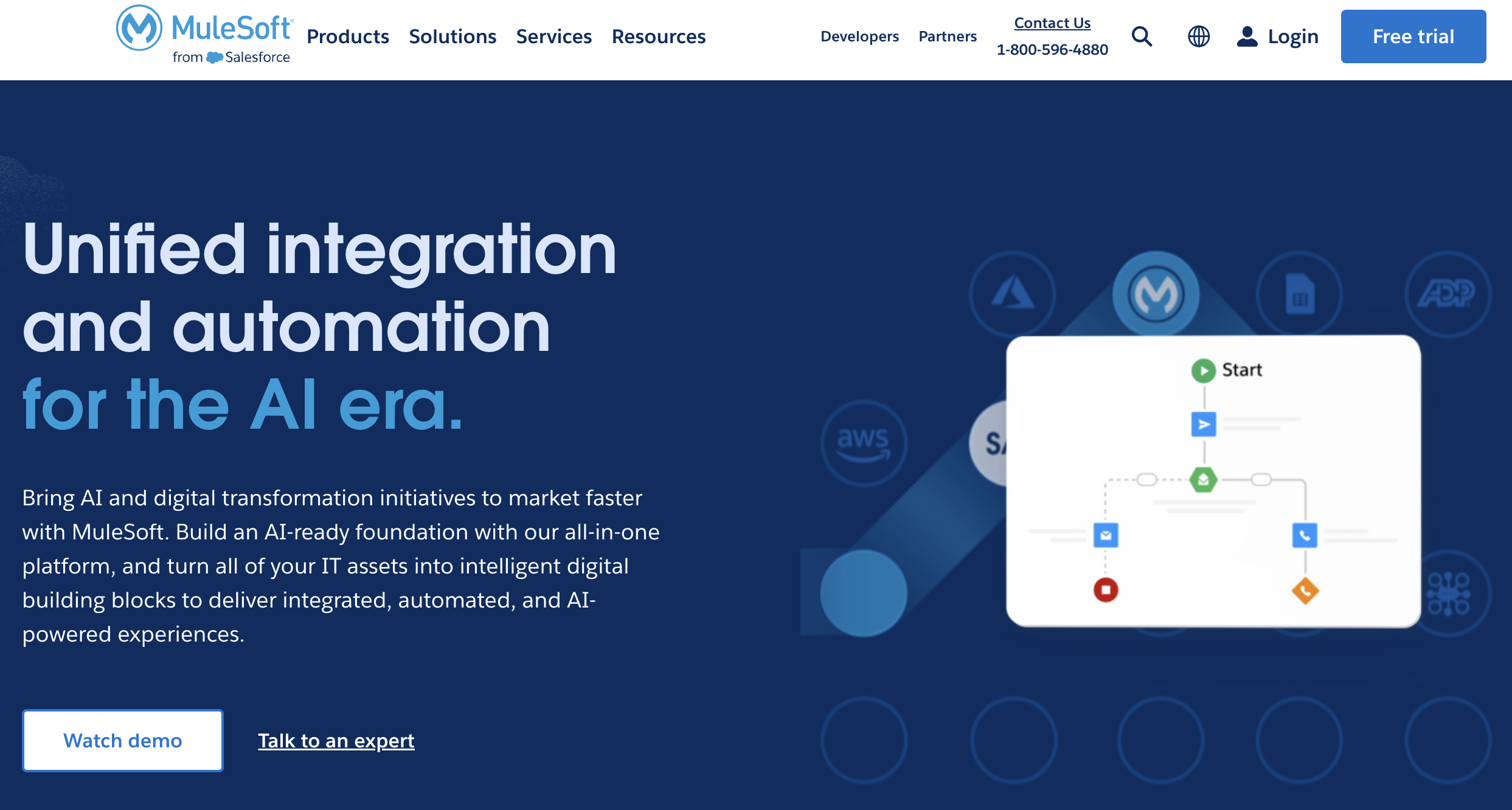
MuleSoft Anypoint Platform is an integration solution that combines application integration, data integration, and API management into a single platform. It supports both cloud and on-premise environments, providing a comprehensive approach to integration.
Features:
- API-led Connectivity: Promotes an API-driven approach, enabling organizations to create, manage, and scale APIs easily.
- Unified Integration Experience: Offers capabilities for integrating applications, data, and devices through a single platform.
- Robust Monitoring Tools: Provides advanced monitoring tools for managing API performance and integration flows.
- Extensive Connector Library: Includes a wide array of pre-built connectors to facilitate integration with various services.
Best Suited For: Organizations looking for a versatile solution that integrates applications, data, and APIs efficiently.
Limitations: The complexity of the platform may require dedicated resources for proper management, and licensing costs can be high.
13. Dell Boomi
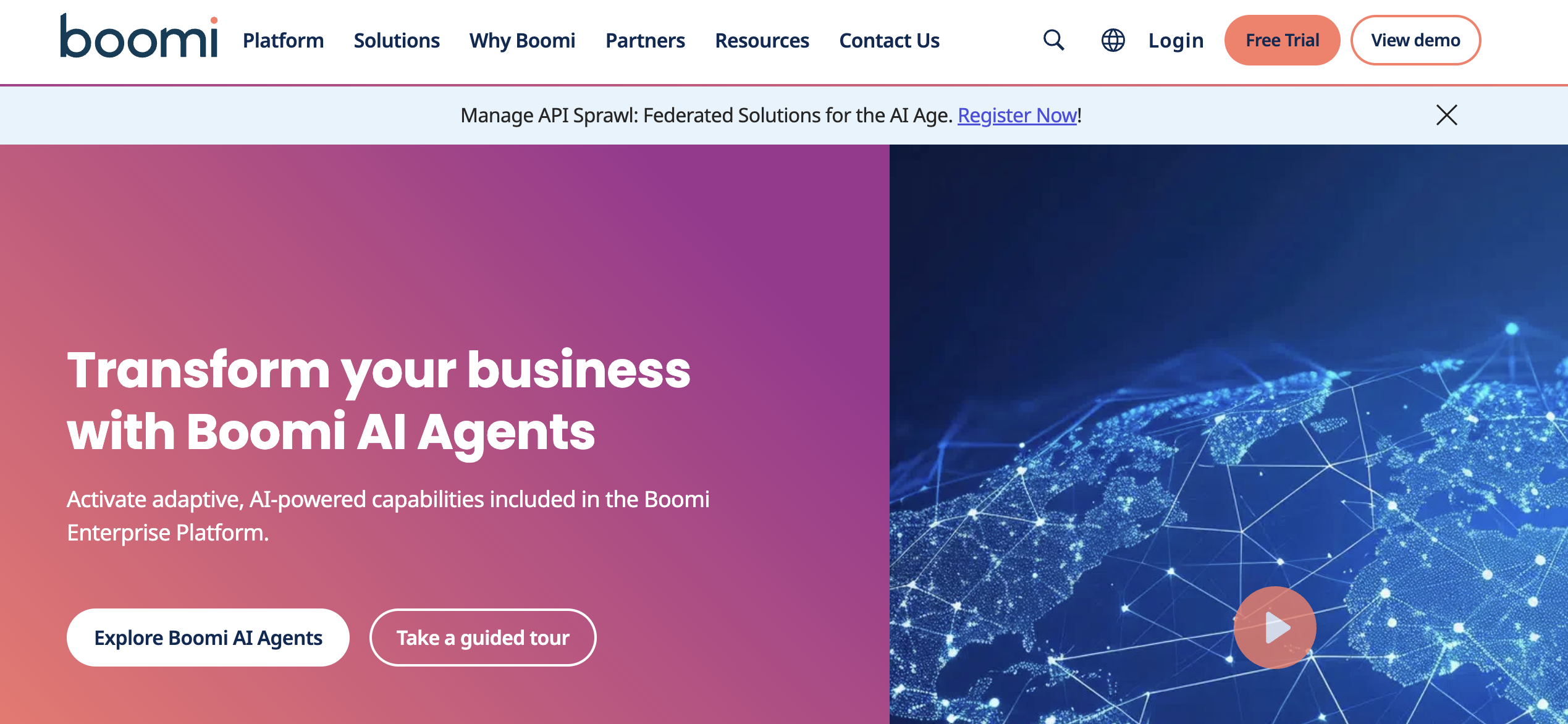
Dell Boomi is a robust integration platform as a service (iPaaS) designed to connect applications, data, and people through a cloud-native platform. It leverages visual tools and pre-built connectors to facilitate rapid integrations.
Features:
- Visual Development Environment: Offers a drag-and-drop interface that allows users to build integrations without extensive coding knowledge.
- Pre-built Connectors: Includes an extensive library of connectors to popular SaaS applications and data sources, expediting the integration process.
- API Management: Provides tools to create, manage, and secure APIs, enhancing connectivity across various platforms.
- Workflow Automation: Supports automation of complex workflows, enabling seamless data movement between applications.
Best Suited For: Organizations seeking to implement agile, scalable integrations across hybrid environments.
Limitations: Potentially high costs may deter smaller organizations, and some users may encounter a learning curve associated with advanced functionalities.
14. Stitch Data
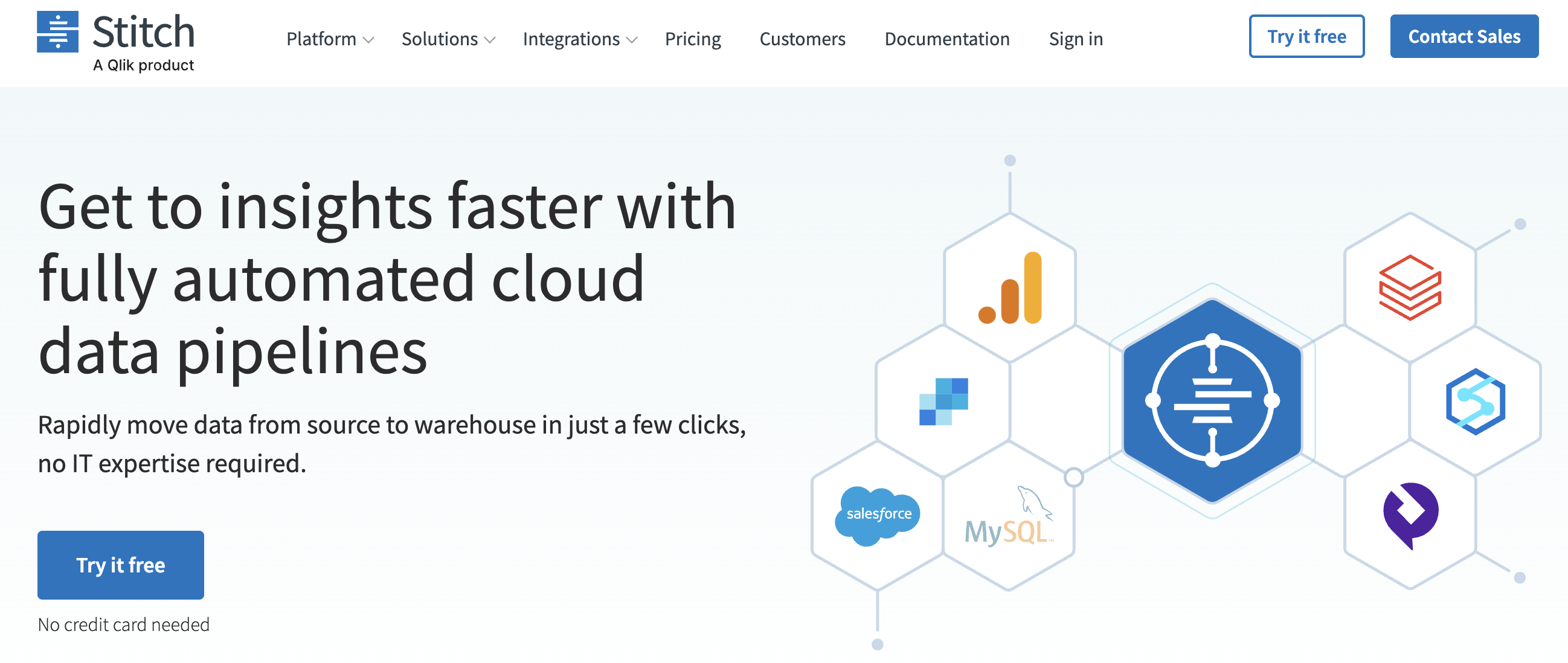
Stitch Data is a simple, powerful ETL service designed for data replication with an emphasis on minimal complexity. It allows users to ingest data from a variety of sources into cloud data warehouses.
Features:
- User-Friendly Interface: Provides an intuitive interface that simplifies data loading processes for users.
- Integration Variety: Supports numerous data sources, ensuring comprehensive coverage for disparate systems.
- Real-Time Data Pipeline: Offers near real-time data ingestion capabilities, ensuring that analytics and reporting are based on the most current information.
- Robust Data Security: Implements strong security measures to safeguard data in transit and at rest.
Best Suited For: Smaller businesses or teams that require an easy-to-use solution for data replication without extensive data engineering resources.
Limitations: Limited customisation options may restrict more complex data transformation needs.
15. Microsoft SQL Server SSIS

Microsoft SQL Server Integration Services (SSIS) is a powerful data integration tool widely used for data migration, transformation, and loading tasks. Its deep integration with the Microsoft ecosystem makes it a popular choice for Windows-based organizations.
Features:
- Comprehensive ETL Capabilities: Provides extensive features for data extraction, transformation, and loading, supporting complex data workflows.
- Graphical User Interface: Utilizes a visual development environment to streamline the creation of data workflows.
- Data Flow and Control Flow: Allows for the design of both data flow and control flow tasks, enhancing flexibility in project management.
- Integration with MS Ecosystem: Seamlessly integrates with other Microsoft products, including Azure and SQL Server databases.
Best Suited For: Enterprises using SQL Server who require a robust solution for data integration and ETL processes.
Limitations: Primarily designed for the Microsoft environment, limiting its use in heterogeneous settings, and the learning curve may be steep for less technical users.
Selecting the right data integration and management tools is critical for organisations aiming to streamline operations and enhance data-driven decision-making. Each platform discussed offers unique advantages and caters to specific business needs. Understanding their strengths and limitations enables companies to make informed choices that align with their strategic goals.
As organizations increasingly rely on data-driven strategies, they face a myriad of challenges in data management that can hinder their operational efficiency and analytical capabilities. Understanding these challenges is essential for developing effective solutions and ensuring optimal data utilization.
Data Management Tools Comparison
In order to make informed decisions regarding data management tools, it is essential to conduct a thorough comparison of the top data management platforms available in the market.
Conclusion
In conclusion, effective data management is integral to the success of modern organizations as they strive to harness the full potential of their data assets. Among the myriad of tools available, Peliqan emerges as a pivotal solution for companies facing challenges in data integration and governance.
With its robust ETL capabilities and user-friendly interface, Peliqan stands out by seamlessly connecting diverse data sources while ensuring high data quality and compliance. Its ability to scale alongside organizational needs empowers businesses to remain agile and responsive in the face of evolving data requirements.
By adopting Peliqan, organizations not only enhance their operational efficiency but also position themselves strategically to leverage their data for profound analytical insights, ultimately driving informed decision-making and fostering sustained growth in today’s competitive landscape.





